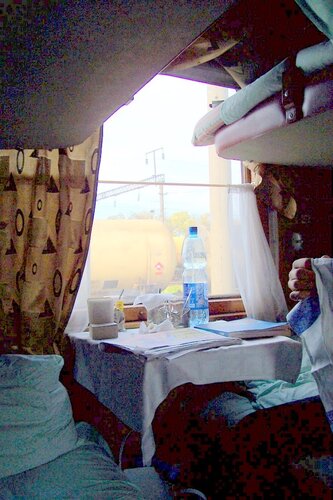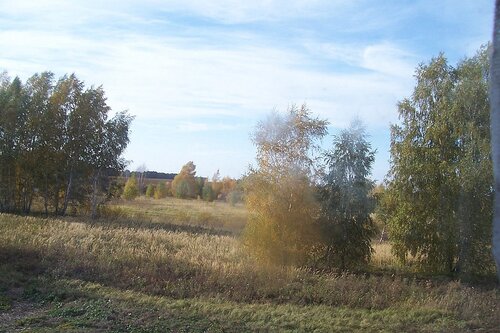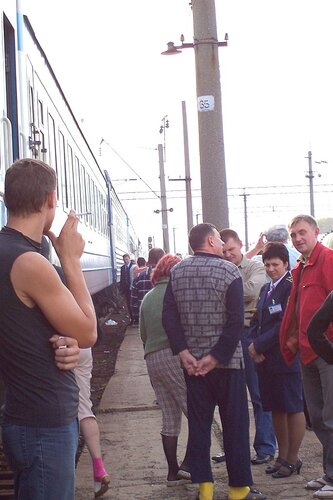So, today we have the situation that many families have members all over the ex-SU. To visit our parents and relatives we use trains mostly (when possible). The peculiarity of our trains is that they are slow. So, to to make a little trip like that I had to do, only about 2000 km, you need some days. I had a very rapid train, I came in Sochi after only 24 hours.
Here is the second class sleeper. My place was that upper there. And it was very comfortable travel.

 All you can do in this days is to look through the windows. Sleep, read and eat. One day it is possible to survive, specially if you found a very good company in your carriage.
All you can do in this days is to look through the windows. Sleep, read and eat. One day it is possible to survive, specially if you found a very good company in your carriage.
 Our train had only some stops on it's road. And it is good. I remember when I was a little girl, my parents wanted to visit my grandies that lived in Nord Kazachstan and Altai. We travelled about 5 days, our train stopped near every post, people went down to pick up flowers, than train began to move and they jumped in it. Fortunatelly nobody remained on the way... Our family was in the last carriage and we, children, set in the open door of that carriage with the legs out in air...
Our train had only some stops on it's road. And it is good. I remember when I was a little girl, my parents wanted to visit my grandies that lived in Nord Kazachstan and Altai. We travelled about 5 days, our train stopped near every post, people went down to pick up flowers, than train began to move and they jumped in it. Fortunatelly nobody remained on the way... Our family was in the last carriage and we, children, set in the open door of that carriage with the legs out in air...Today it's unpossible, I think. But the stops remain a great joy of the travellers. They go out and walk here and there, buy something in the shops if they have time. For the persons that live near these railway stations it's a good way to sell something the travellers need. Something to eat mostly. Like hot potatoes, cakes, vegetables, fruits, drinks. If they have fish in that village, they sell fish, if honey, they sell honey. Everything they can. Women -mostly- come to the trains with great bags full of all that and go from one carriage to the other and offer it to travellers standing near them.

 The most loved and eccellent way to pass time in good company in train is to drink tea.
The most loved and eccellent way to pass time in good company in train is to drink tea.There are tea-lovers that drink it all the way paused only by train-stops, toilet and sleep (if they decide to sleep).
Till today we have this special model of glass with glass holder that seems to be the most important part of travel in train in Russia. Well, everybody takes own glass from home in train today, but these glasses are there in the carriage, and the conductor gives it to you if you ask about it. You have to pay tea now, but you can do it only the first time and then use your own tea or coffee with this glass till you come on your destination.
















































